Posts tagged with "How-To" contain reflections on designing, organizing, and operating the HDL Studios, a series of three collaborative, multi-disciplinary problem solving experiments we held this summer. These posts are meant to be informative for others who may also be exploring ways to put the design process to use in new ways or those who find themselves struggling to work between disciplines or silos.
—
Last time we discussed how to put together a great Studio team. The flip side of assembling a talented group of people is that they tend to be incredibly busy, meaning that we were lucky to get a solid week of their time.
In this short window of time, the studio members had to meet and get to know each other, acclimate to the culture and locality of Finland, soak up the specifics of the Studio challenge, and—oh yeah—they also needed some time to work together towards developing a holistic, integrated framework for thinking about the challenge and then document it in a way that would spur conversation. With only a week to accomplish all of this, we had to make every minute count.
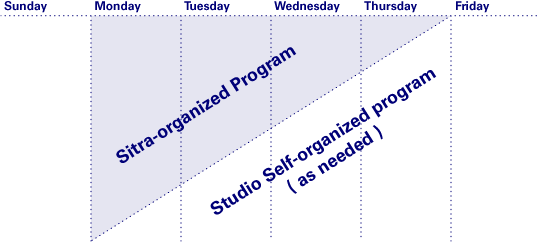
The basic outline of the week starts with stuff HDL arranged ahead of time and ended with a self-directed schedule

The actual schedule for each of the studio weeks was something like this
The general scheme for the Studio week started with Monday and Tuesday full of pre-arranged meetings and visits, trailing off to allow the team to define their own schedule in the second half of the week.
On Sunday we gathered for a very casual, quick dinner in the evening to welcome everyone to Helsinki and give them a chance to get to know one another. This ended early so that everyone could catch up on sleep before the busy week, some guests having traveled from overseas.
Mondays began with an introductory session where Marco shared a bit of material to explain "what success looks like" and give the studio and the studio members had another opportunity to introduce themselves and their thoughts on the challenge as outlined by the challenge briefing.
The primary goal of Mondays, however, was to give the studio a solid overview of the context that they would be working within. This was conveyed through a series of 3 or 4 guest lectures, each followed by a discussion period of about an hour. For example, the education studio had speakers talk about the socioeconomic development of Finland, the Finnish bureaucracy, classroom education and teacher education, and policing and prevention related to at-risk youth.
Tuesday of each studio was then spent in the field, out and about around Finland seeing first hand the reality of the challenge. To continue using the education studio as an example, this included visits to a primary school and a youth culture NGO.
Wednesday and Thursday were left relatively un-scheduled for the studio to self-organize and use as they saw fit. During each of the three studios we found that there were requests for additional meetings, so we were able to quickly arrange additional site visits or bring in more speakers on an as-needed basis. Meanwhile, the bulk of these days were spent in deep discussion and debate as the studio team developed a synthetic and holistic response to the challenge.
The ultimate target for the week was a "final review," a brief presentation and conversation with key stakeholders that occurred at the end of the day on Fridays. To help keep things on track, Marco and I sat with the studios on Friday morning to hear a dry-run and provide some feedback on the clarity of the story.
At 4PM on Friday, a group of 3-5 guests arrived and we pushed the conference table out of the way to make room for a presentation and discussion. Afterwards, we continued the conversation over dinner in the studio space, with the work of the studio's intense week covering the walls.
One week disappears very quickly during such an intense experience, and the teams were all very conscientious people who dedicated the entirety of their mental facilities to the challenge we gave them. As a mental 'steam valve' we set the end of the day at 4PM so that everyone could have a chance to rest or relax before dinner (typically at 7PM).
Dinners were pre-booked for each night of the week with the agreement that studio members could opt-out if they needed to rest. However, the majority of the dinners were with the full studios and this proved to be a very important venue for fleshing out ideas and developing the team's social bond. With only four days to really develop the bulk of the work, the Monday-Thursday meals represent a total of about eight hours of conversation—essentially another full work day.
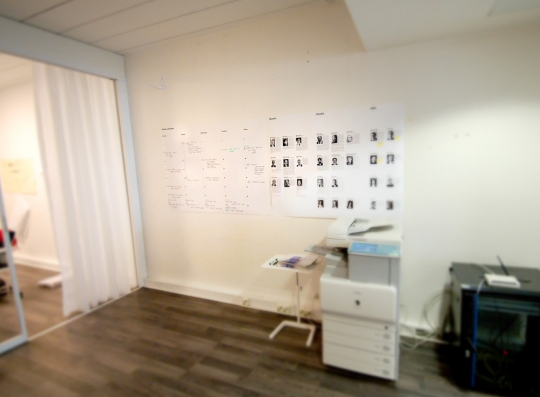
Our hightech solution to keeping the schedule up to date: a laminated poster and some whiteboard markers. We hung this live version of the schedule in a convenient corner of the studio
We also learned the hard way that it's very difficult to control a schedule that involves tons of moving parts. People change their arrival time, or become unavailable, things run late, etc. For this reason, the printed schedule that we handed out at the beginning of the week was just an overview, and we put up a wall-calendar which was updated as-needed the old fashioned way: with a marker.
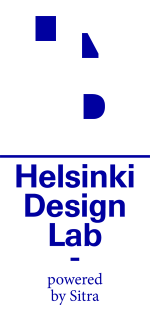
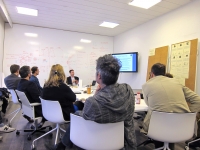

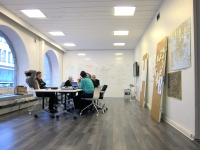
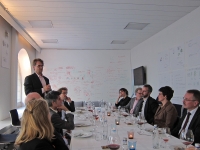

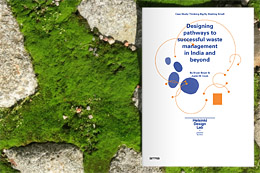
These are great posts, Bryan, thanks. Really useful. One other thing I'd add here is the importance of the 'halo' of activities around the week, and in particular the briefing notes you produced beforehand. These were immensely useful in terms of enabling us to 'hit the ground running' on that Monday morning. And the 'halo' afterwards is beginning to emerge now, apparently ...
posted by Dan Hill — 4 weeks ago